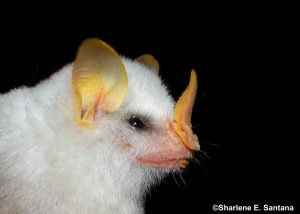Carotenoids are responsible for many bright red, yellow and orange colors found in nature, but vertebrates cannot synthesize them and must obtain these photosynthetic pigments from dietary sources. In contrast to melanins, thus, carotenoid-based pigmentation is not under direct cellular control. However, carotenoids are essential micronutrients for animals. In the human macula, carotenoids filter damaging UV radiation and fulfill an antioxidant effect against free radicals. We have initiated a change of paradigm in animal physiology with the discovery that some mammals, in contrast to previous assumptions, have evolved mechanisms to incorporate and deposit carotenoids in the skin. The Honduran white bat Ectophylla alba actually displays a bright yellow skin coloration due to the deposition of the carotenoid lutein in esterified form with fatty acids. As most mammals, including humans, make an inefficient distribution of carotenoids to tissues and organs, these findings open new perspectives to develop strategies to avoid eye damage and other health benefits. In my research on bat carotenoids I count on the collaboration with Dr. Bernal Rodríguez-Herrera, from the University of Costa Rica. |
|

Evolutionary Physiology of Animal Pigmentation
